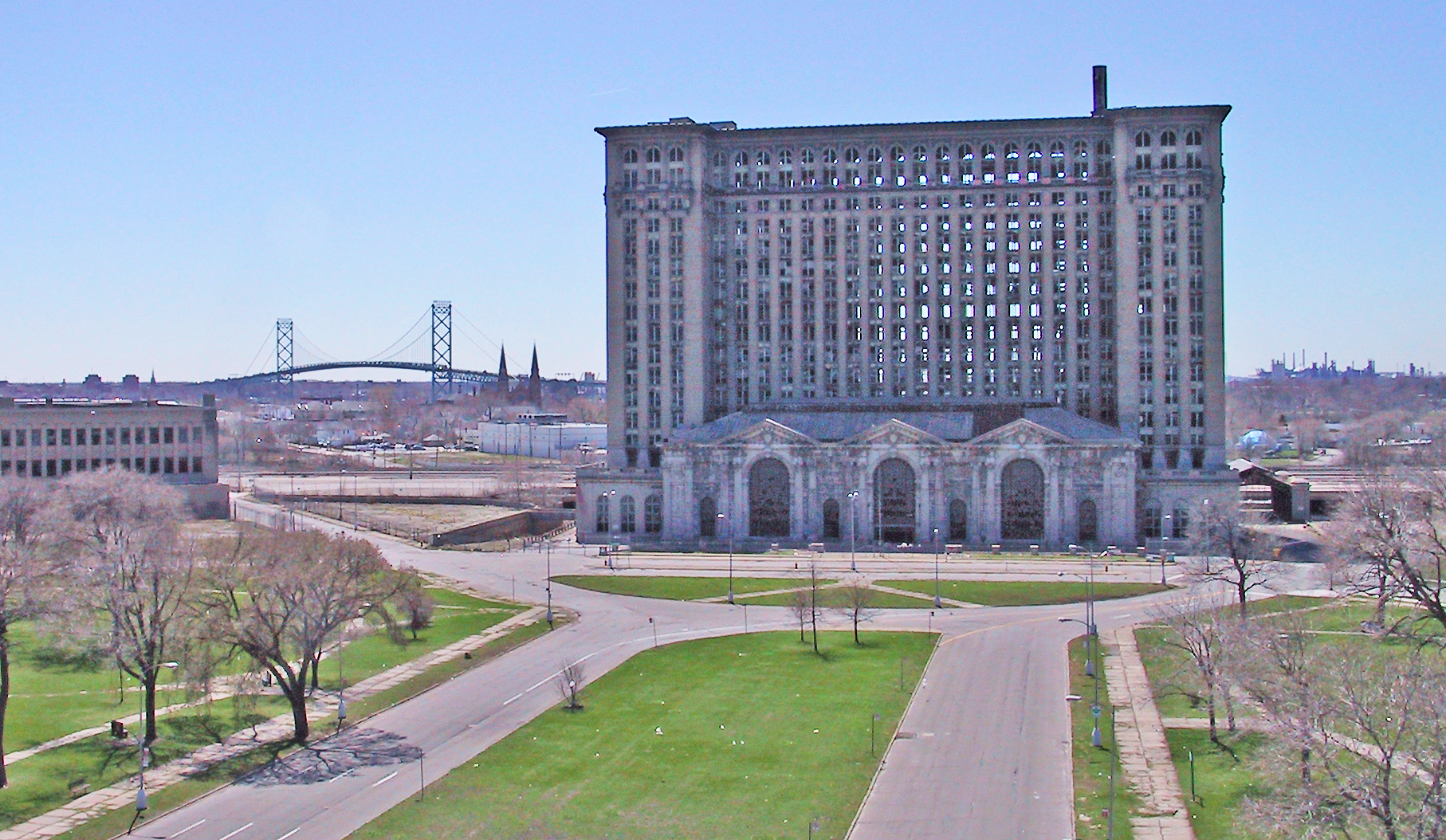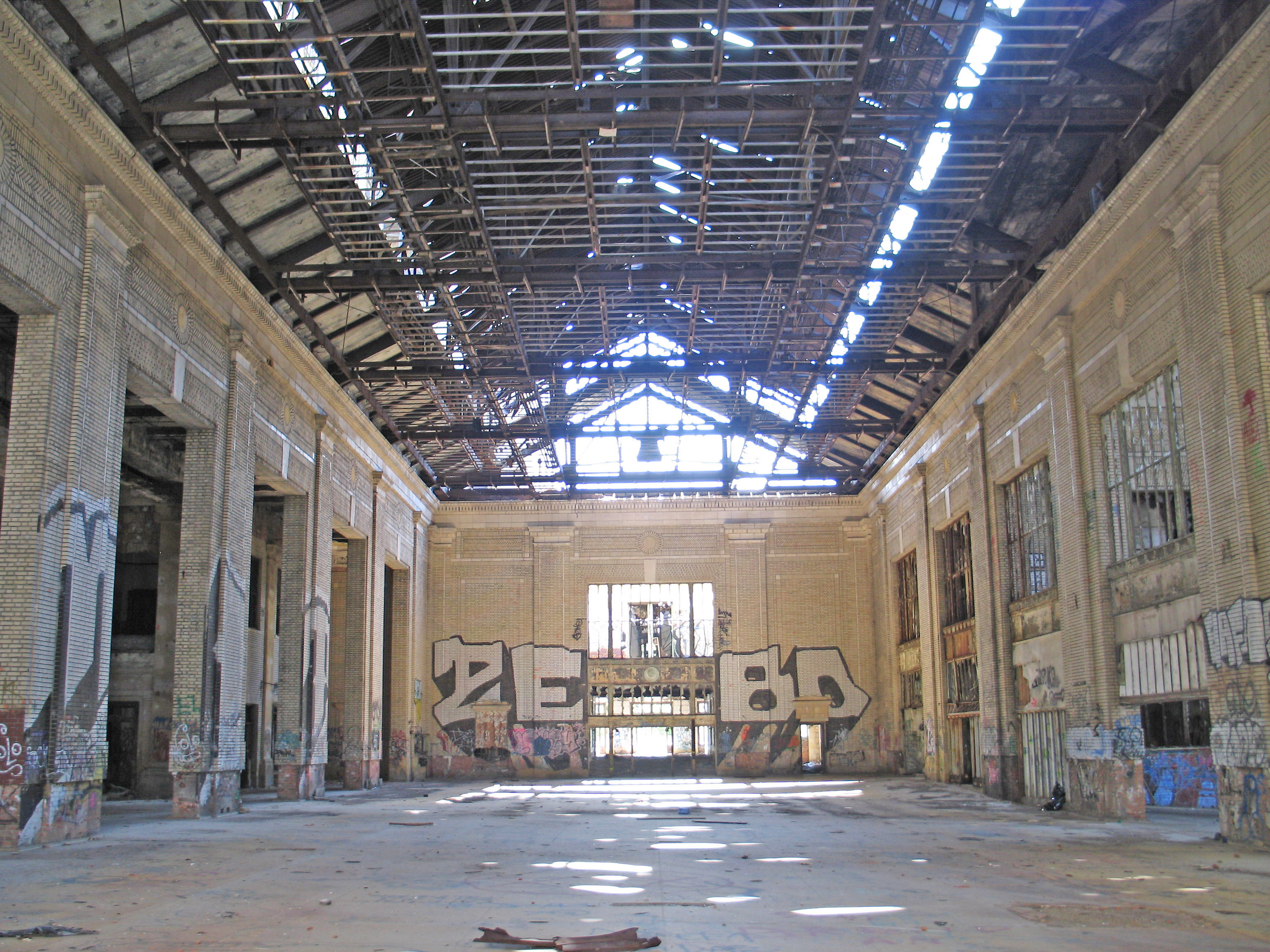New life, new purpose for Michigan Central Station
Date Posted: July 13 2018
DETROIT - What do you do with an 18-story behemoth building, positioned hard-up against a wide set of railroad tracks in an area that's inconvenient to downtown, that was built for a bygone industry in an era that was changing even as the tower's structure was being erected?

THE 18-STORY MICHIGAN CENTRAL Station earlier this century, before new windows were installed. Opened in 1913, the Michigan Central Railroad acquired about 50 acres of land around the property in 1910, in what was then said to be the largest real estate transaction in Michigan history. At 213 feet, it was the world’s tallest rail station when constructed.

A RUINED CONCOURSE at Michigan Central Station in 2011.
Those series of issues have vexed the redevelopment of Michigan Central Station in the city's Corktown neighborhood ever since the last Amtrak passenger train rolled out of the depot on Jan. 5, 1988, headed for Chicago. But now, at last, Ford Motor Co. has stepped in as the building's savior. The company announced on June 19 its vision of making the renovated train station, which opened in 1913, the innovation hub for Ford’s vision for the future of transportation.
“Michigan Central Station is a place that in many ways tells the story of Detroit over the past century,” said Bill Ford, the company’s executive chairman. “We at Ford want to help write the next chapter, working together in Corktown with the best startups, the smartest talent, and the thinkers, engineers, and problem-solvers who see things differently – all to shape the future of mobility and transportation.”
Ford didn't put a price tag on the renovation of the old 500,000 square-foot tower, but $100 million is a good starting point. The building trades may be working on the renovation project until 1922. The Moroun family, which sold the train station to Ford, did place windows in the building, removed hazardous materials and installed a freight elevator in recent years. But 30 years without having a tenant in the building allowed urban scavengers to remove metal and wire, and graffiti artists to do their dirty work. Even empty and broken, the former waiting room on the first floor is a still-lovely shell of a space. More utilitarian former offices on the floors above have been similarly cleared in past years, awaiting redevelopment.
Ford has all manner of plans for the building. Company officials said they plan to renovate the lobby, and modernize the floors above. As many as 2,500 Ford employees might work out of the former train station - the majority from its mobility team. They will "work on autonomous and electric vehicles, and design urban mobility services and solutions that includes smart, connected vehicles, roads, parking and public transit," Ford said. Another 2,500 employees are expected from other companies in related businesses.
The plans include keeping the station's lobby open to the public. Other space in the building will house retail, community areas, and even residential housing. It could take up to four years for the work to be complete.
The train station is central to Ford's plans for Corktown, but the automaker has acquired other buildings in the neighborhood just west of downtown to house its workers. The automaker has acquired the former Detroit Public Schools Book Depository near the former station, as well as the nearby recently refurbished former site of a 1907 hosiery factory at Michigan Avenue and Rosa Parks and a old brass factory just south of that building.
Ford President and CEO Jim Hackett likened the commitment Ford is making to Corktown as similar to what Henry Ford did when he opened the massive Rouge Plant in 1918.
“What Rouge was to Ford in the industrial age, Corktown can be for Ford in the information age,” said Hackett. “It will be the proving ground where Ford and our partners design and test the services and solutions for the way people are going to live and get around tomorrow, creating a Southeast Michigan mobility corridor that spans west from Dearborn to Ann Arbor, and east to Detroit.”
Ford plans to use at least 1.2 million square feet of space in Corktown, three-quarters of which will be split between the company and its partners. The remaining 300,000 square feet will serve as a mix of community and retail space, and residential housing.
“This is a really big, transformational event in the city’s revitalization,” said Sandy K. Baruah, chief executive of the Detroit Regional Chamber, to the New York Times. “It’s going to pull development of the city westward, and to have a global investor in Detroit is really a green light to outside investors.”

THE 18-STORY MICHIGAN CENTRAL Station earlier this century, before new windows were installed. Opened in 1913, the Michigan Central Railroad acquired about 50 acres of land around the property in 1910, in what was then said to be the largest real estate transaction in Michigan history. At 213 feet, it was the world’s tallest rail station when constructed.

A RUINED CONCOURSE at Michigan Central Station in 2011.
